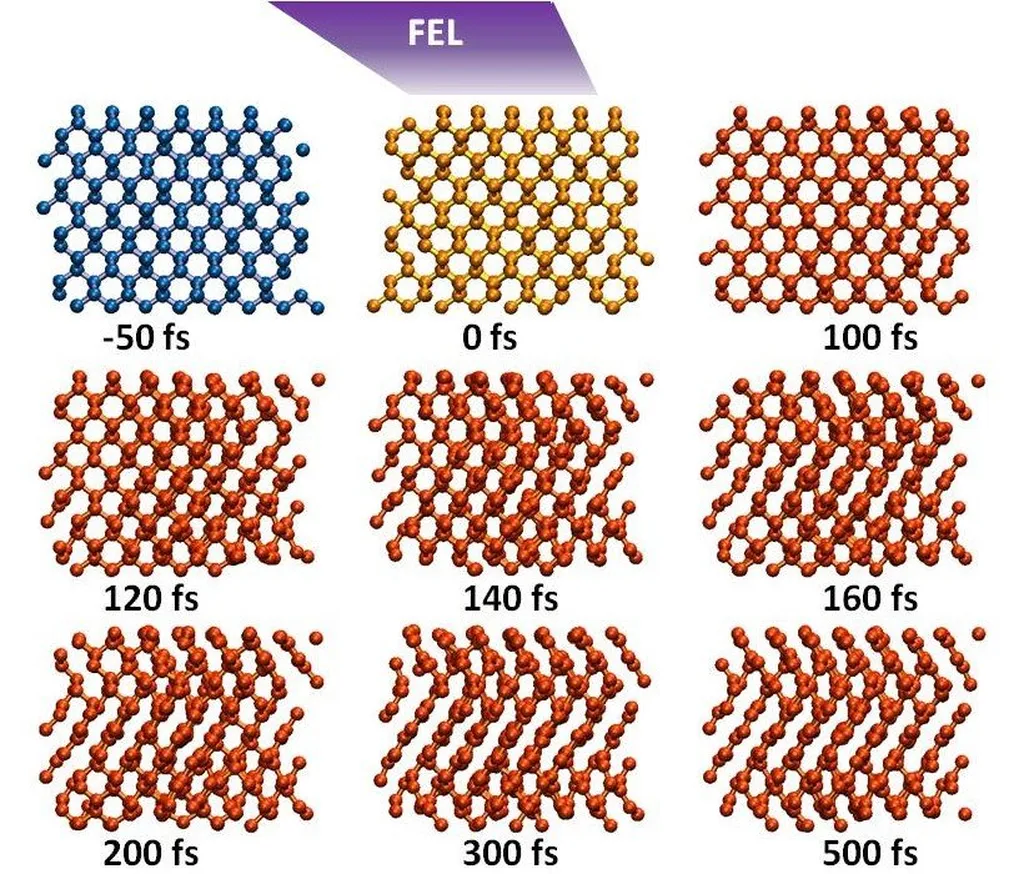In the heart of Beijing, researchers are unraveling the secrets of diamond’s transformation, a discovery that could revolutionize the energy sector and beyond. Haochen Zhang, a scientist at the College of Materials Science and Opto-electronic Technology, University of Chinese Academy of Sciences, is leading a charge to understand and harness the process of diamond graphitization. His recent paper, published in the journal *Functional Diamond* (translated from Chinese as *功能钻石*), is a comprehensive review that could shape the future of semiconductor technology and energy applications.
Diamond, known for its unparalleled hardness and thermal conductivity, can undergo a remarkable transformation under specific conditions. This process, known as graphitization, converts diamond into graphite, a more stable form of carbon at standard temperatures and pressures. The implications of this transformation are vast, particularly in the energy sector, where diamond’s unique properties are highly valued.
“Diamond graphitization is not just a scientific curiosity; it’s a core technology that can drive advancements in various industries,” Zhang explains. His research delves into the manifestations, mechanisms, and influencing factors of this transformation, providing a roadmap for future applications.
The study outlines three key stages of diamond graphitization research, each focusing on different fields such as heating, diamond tools and coatings, irradiation, dissolution, polishing, and simulation. By clarifying the distinctions between graphitization, amorphization, and oxidation, Zhang’s work offers valuable insights into the effects of temperature, pressure, atmosphere, and processing parameters on the graphitization process.
One of the most compelling aspects of this research is its potential to enhance the functionality of diamond tools and coatings used in the energy sector. By understanding and controlling the graphitization process, engineers can develop more durable and efficient tools for drilling, cutting, and other high-stress applications. This could lead to significant cost savings and improved performance in energy exploration and production.
Moreover, the study highlights the importance of utilizing or suppressing diamond graphitization in functional applications. For instance, in semiconductor technology, controlling graphitization can enhance the performance of diamond-based electronic devices, paving the way for the next generation of energy-efficient electronics.
As the world grapples with the challenges of climate change and the need for sustainable energy solutions, research like Zhang’s offers a glimmer of hope. By unlocking the secrets of diamond graphitization, scientists and engineers can develop innovative technologies that drive the energy sector forward.
Zhang’s work, published in *Functional Diamond*, is a testament to the power of scientific inquiry and its potential to transform industries. As the world continues to evolve, the insights gained from this research will undoubtedly play a crucial role in shaping the future of energy and technology.

